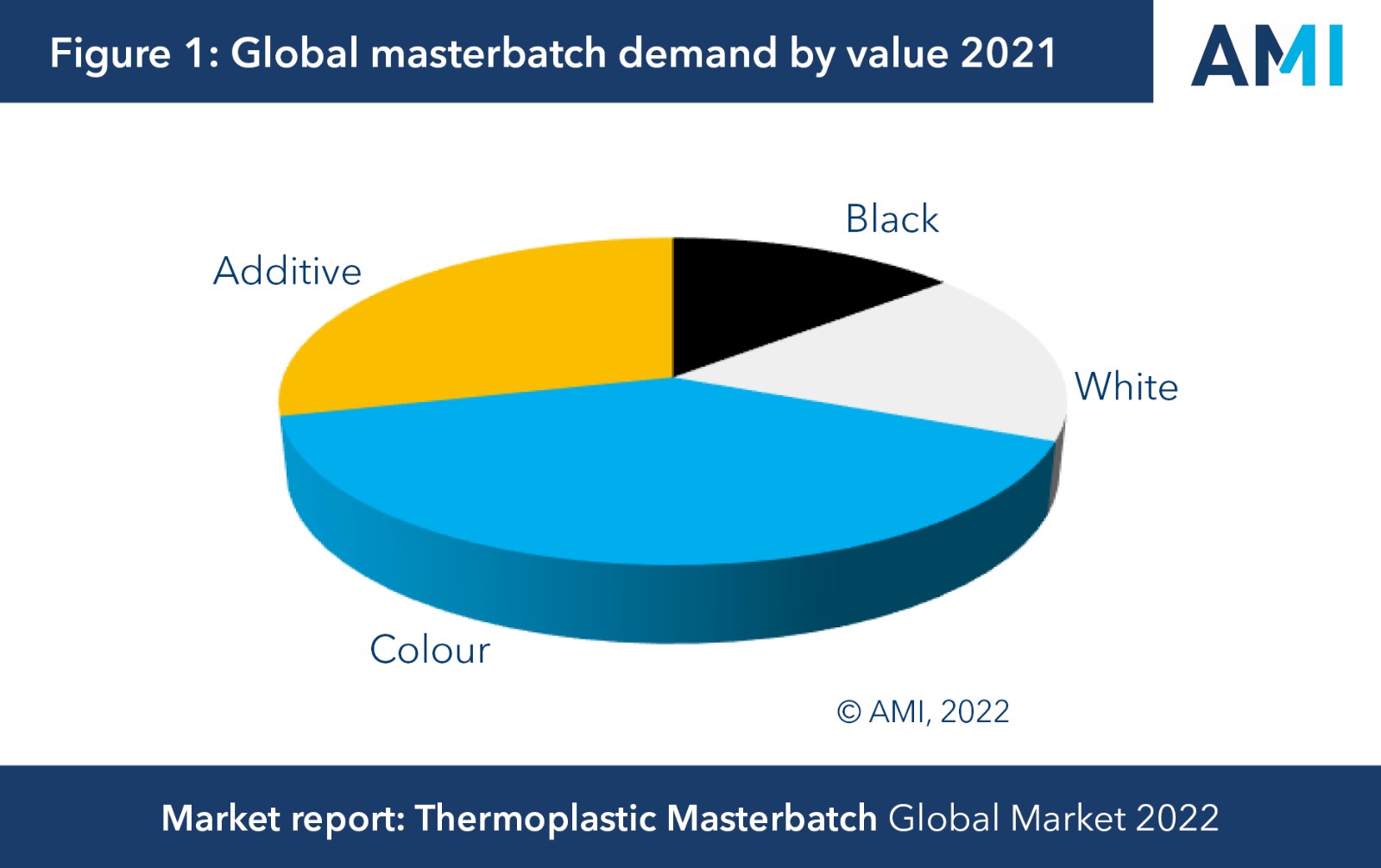The masterbatch market continues to be incredibly dynamic, maintaining growth throughout the pandemic in all major global regions, and outperforming the growth of both GDP and the underlying polymer demand. It is now a market worth more than US$30 billion. The sector is expected to go from strength to strength over the next five years, with the average annual growth rate exceeding 5%. Unsurprisingly, the fastest double-digit growth will be present in the developing global regions, whereas more moderate growth rates will be experienced in the well-established markets of Europe, North America and North East Asia.
The new report “Thermoplastic Masterbatch Global Market 2022”, from AMI Consulting provides a comprehensive analysis of current status and the future prospects of the global masterbatch market. Both production and the demand for different masterbatch types (black, white, colour and additives) is analysed in detail for eight global regions, along with the demand from major end-use markets. The competitive landscape is also reviewed, with key players for each product and region identified and their latest activities explored.
In volume terms the global masterbatch market is fairly evenly split between the four main types of black, white, colour and additive. In value terms, however, colour masterbatch dominates the market.

The report further indicates that market for additive masterbatches will outpace the growth of other masterbatch products, propelled by the surge in demand for more advanced product formulations to meet the evermore complicated customer requirements that combine pigments with various additives. Much of the product innovation still takes place in the more developed markets, but other regions are quickly catching up, and indeed, the fastest growth for all product types will be present in China and the Indian subcontinent over the forecast period. China is the largest supplier of masterbatch in the world, with much of the output consumed by its own vast manufacturing sector. In the Indian sub-continent, the market will grow incredibly strongly, in double digits for many applications, as an increasing number of converters implement more sophisticated manufacturing technologies and use masterbatch as opposed to traditional colouring methods.
Whilst increasingly sophisticated technical performance is a requirement by many converters, there is also an ongoing pressure to make the products more environmentally friendly and easier to recycle in response to upcoming legislation and consumer and brand pressure. As a result, the masterbatch manufacturers are having to develop new products and adapt their existing product formulations in a relatively short time scale. Therefore, the research focus of many key players is now on sustainability and how to better implement a sustainable approach to their product formulations. AMI’s new report on Global Masterbatch markets analyses the impact of this ongoing sustainability drive on masterbatch industry.
This study provides the reader a detailed view of global masterbatch production and demand and how the sector will shape up in the next five years in different global regions. It discusses the major trends driving the market and trade flows in a global scale to provide companies detailed information to help them with their key investment and marketing decisions.














